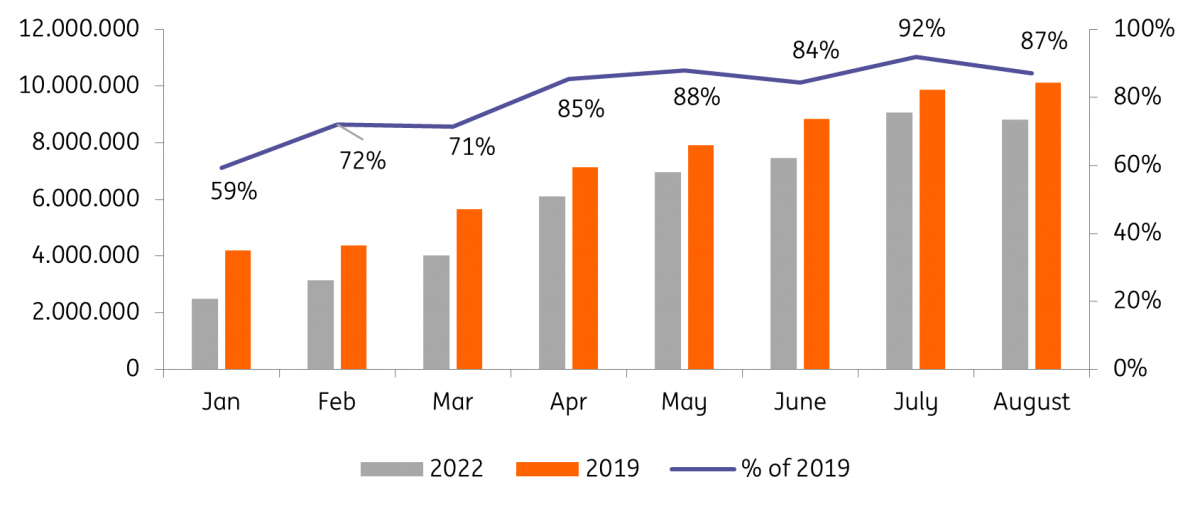Reopening effect on Spanish tourism fades
The recovery in Spanish tourism seems to be slowing down. While the number of international visitors in July was still at 92% of its pre-pandemic levels, this dropped to 87% in August
International tourism at 87% of pre-pandemic levels in August
The gloomy economic outlook and the uncertain geopolitical situation now seem to be slowing down the recovery of the Spanish tourism sector. In August, Spain welcomed 8.8 million international tourists, equivalent to 87% of its pre-pandemic level. In July, 9.1 million international tourists visited Spain, which then corresponded to 92% of its pre-pandemic level. Also, total expenditures by international tourists, corrected for inflation, dropped to 85% of pre-pandemic levels in August, from 88% in July. These figures show that it will probably take another year for international tourism to return to pre-pandemic levels. The slowdown in domestic tourism was even greater than that of foreign tourism. The number of hotel stays booked by residents fell to 101% of pre-pandemic levels in August, from 107% in July.
International tourists entering Spain, in % of pre-Covid levels

Tourism will still support economic activity in 3Q but outlook is weaker
As tourism is an important economic sector in Spain, contributing 14% to total GDP in 2019, according to the World Travel and Tourism Council, a sustained recovery is an important factor for economic growth. The tourism sector has held up much better than the rest of the economy so far. Although the recovery appears to be slowing, tourism will still continue to support Spanish economic activity in the third quarter of 2022. However, the new figures also show that the contribution of tourism to Spain's economic growth is likely to fall in the coming months as the eurozone heads towards recession.
In the second quarter, Spain's economy still grew by 1.5% on a quarterly basis, thanks to strong growth in domestic demand and the revival of tourism. However, the third quarter looks set to be weaker than the second. The latest manufacturing PMI released last Friday showed that factory activity contracted in September due to high inflation and a falling number of new orders. The PMI index fell to 49.0 last month from 49.9 in August, staying below the 50.0 mark that separates growth from contraction. Also, consumer confidence fell again in September which does not bode well for consumption in the third quarter. For the third quarter, we expect a slowdown in the economy followed by a slight contraction in the fourth quarter. Year-on-year growth would then reach 4.3% over the full year. For 2023, we expect growth between 0 and 1% as the energy crisis will continue to weigh on the outlook.